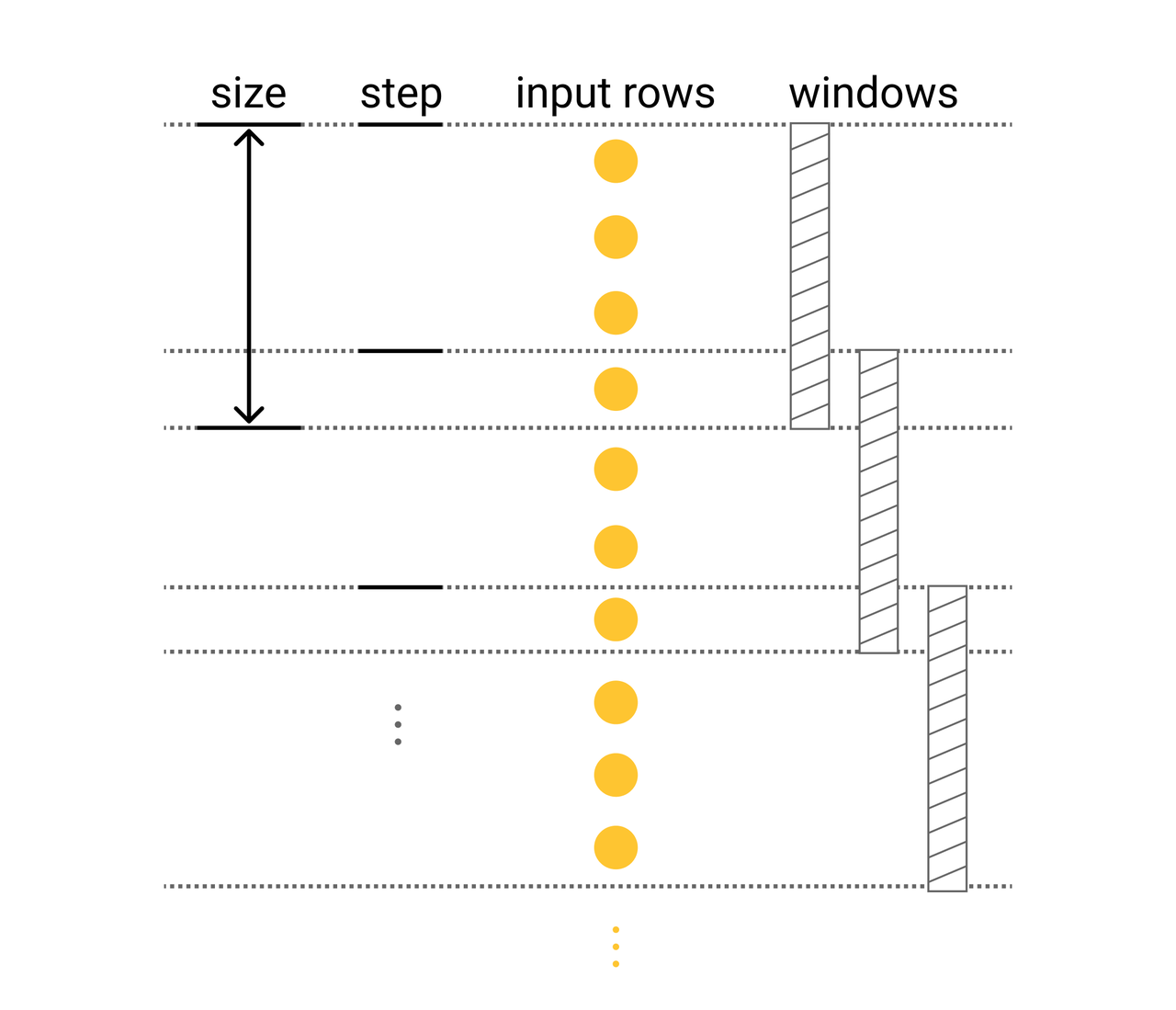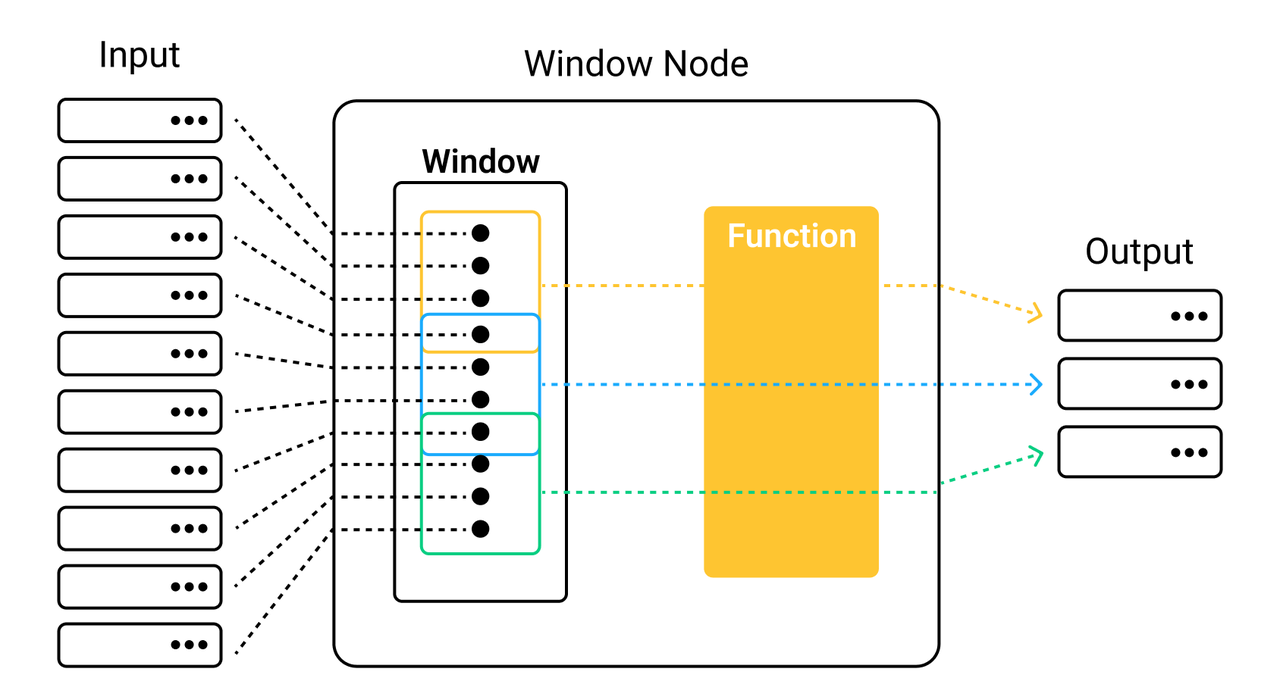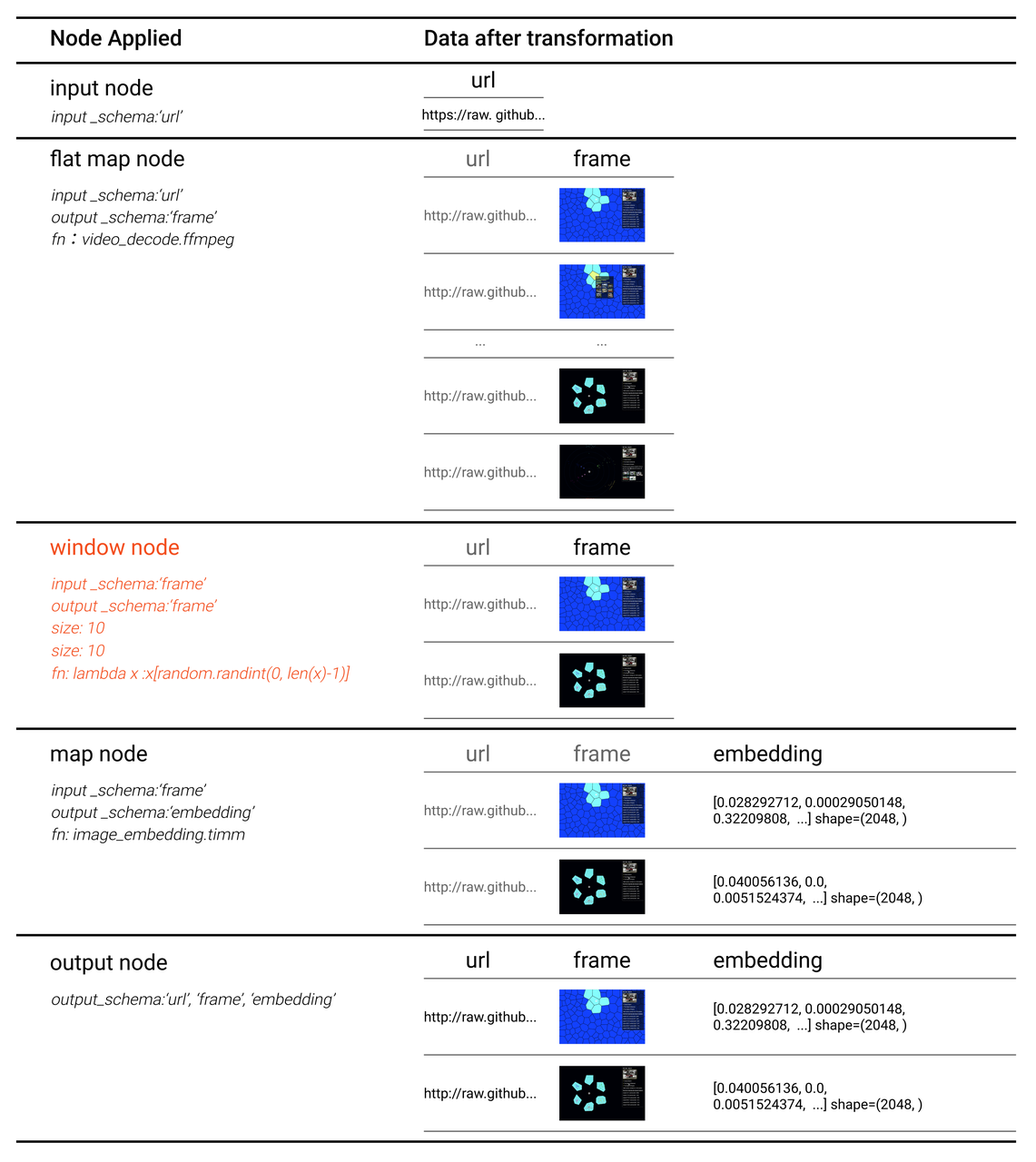Window
Introduction
The window node batches the input rows into multiple rows based on the specified window size (size) and steps (step). The size determines the window length, and step determines how long a window moves from the previous one. Note that if step is less than size, the windows will overlap. The window node applies a function func to each of the windowed data, and returns the results - one row of results for each of the windows. Refer to window API for more details.
This figure shows the relationship between size, step, input rows, and windows:

The figure below illustrates how window applies the transformation to the rows:

Since rows in each window will be organized as a list, the input of a window node function should be a list.
Example
We use the window(input_schema, output_schema, size, step, fn, config=None) interface to create a window node.
Now let's take a video frame and image feature extraction pipeline to demonstrate how to use a window node. This pipeline randomly selects one video frame out of ten frames and extracts the feature embeddings of the selected frames.
from towhee import ops, pipe
import random
video_frame_embedding = (
pipe.input('url')
.flat_map('url', 'frame', ops.video_decode.ffmpeg())
.window('frame', 'frame', 10, 10, lambda x: x[random.randint(0, len(x)-1)])
.map('frame', 'embedding', ops.image_embedding.timm(model_name='resnet50'))
.output('url', 'frame', 'embedding')
)
data = 'https://raw.githubusercontent.com/towhee-io/examples/0.7/video/reverse_video_search/tmp/Ou1w86qEr58.gif'
res = video_frame_embedding(data)
The DAG of the video_frame_embedding pipeline is illustrated below.

The data processing workflow of the main nodes is as follows.
Flat map: Uses the video-decode/ffmpeg operator to decode video URLs (
url) into a list of video frames (List(towhee.types.VideoFrame)), and then flattens this list into multiple rows. Each row contains one video frame.Window: Specifies the value of both
sizeandstepas10to batch every 10 video frames (frame) into a window, and then applies the functionlambda x: x[random.randint(0, len(x)-1)]to randomly select one video frame (frame) from each window.Note that if there are less than ten frames at the end of a video, the rest of the video frames will still be batched into a window.
Map: Uses the image-embedding/timm operator to extract the feature embeddings (
embedding) of the selected frames (frame).
When the pipeline is running, data transformation in each node is illustrated below.
Note:
- Data in the
framecolumn are in the format oftowhee.types.VideoFrame. These data represent the decoded video frames. For easier understanding, these data are displayed as images in the following figure.- This example contains 16 video frames. Not all data are listed in the flat map node step.
- Since the video frames are randomly selected, the output you get can vary from our example.

Notes
- The input of a window node function should be a list.